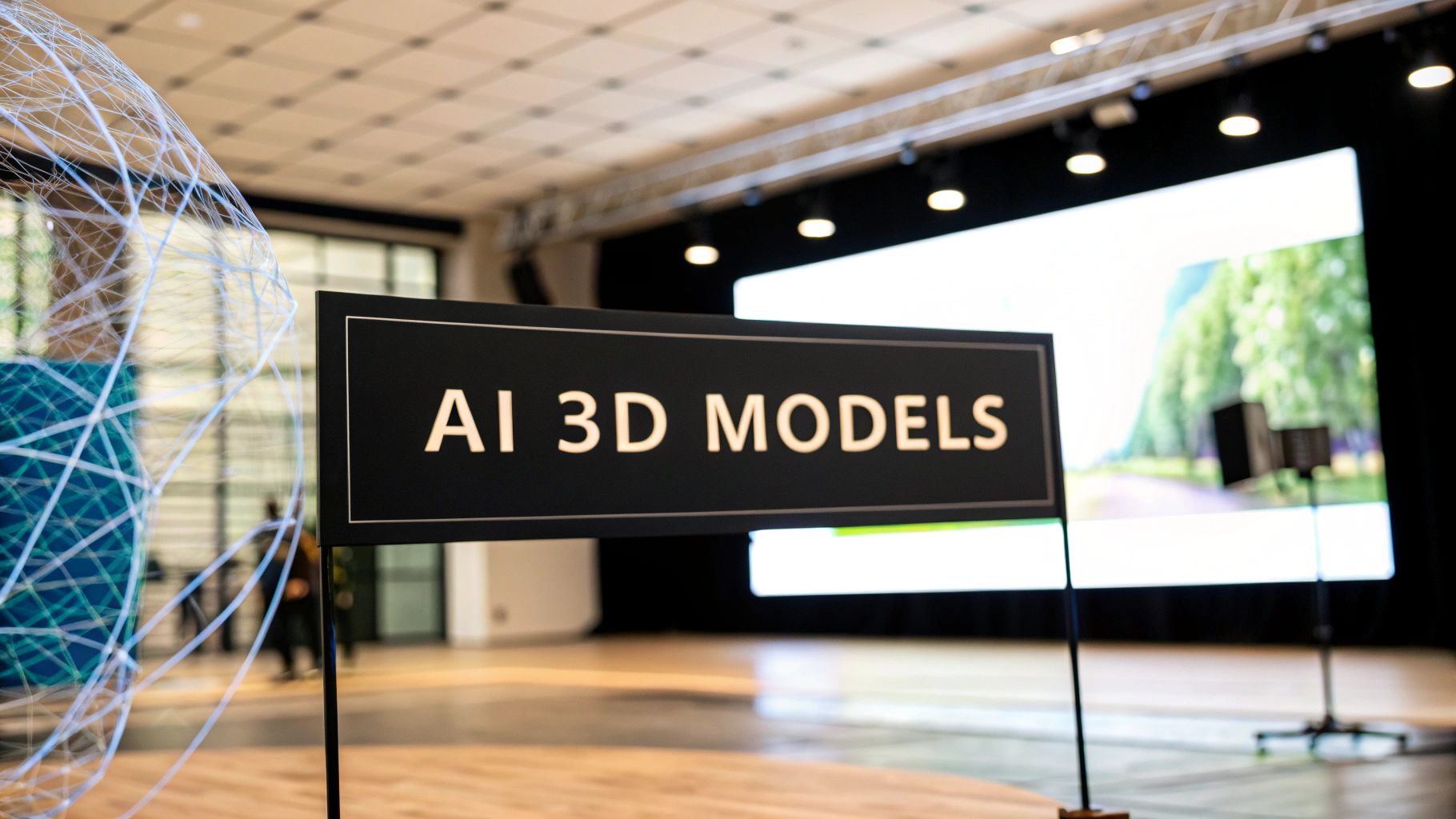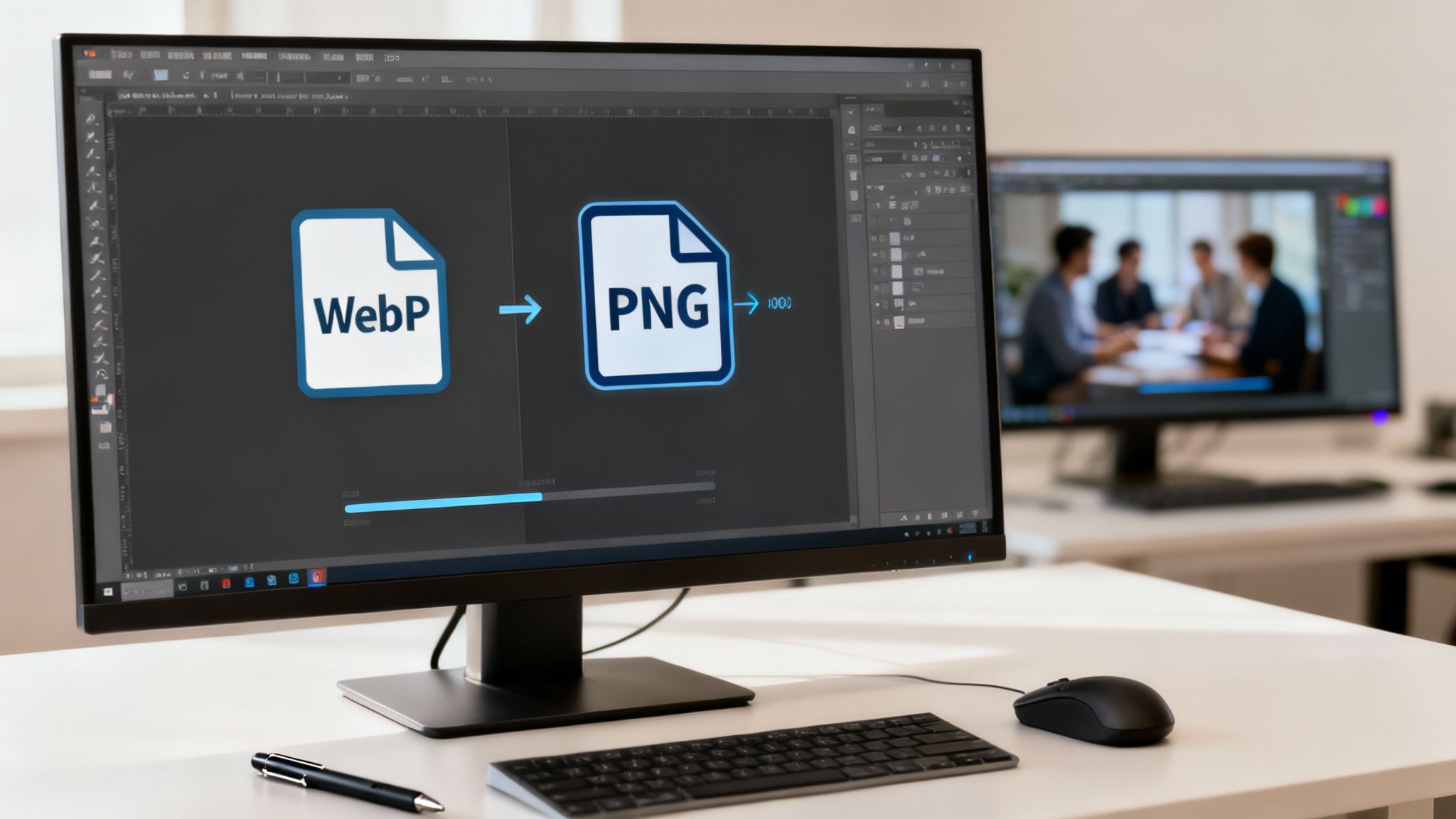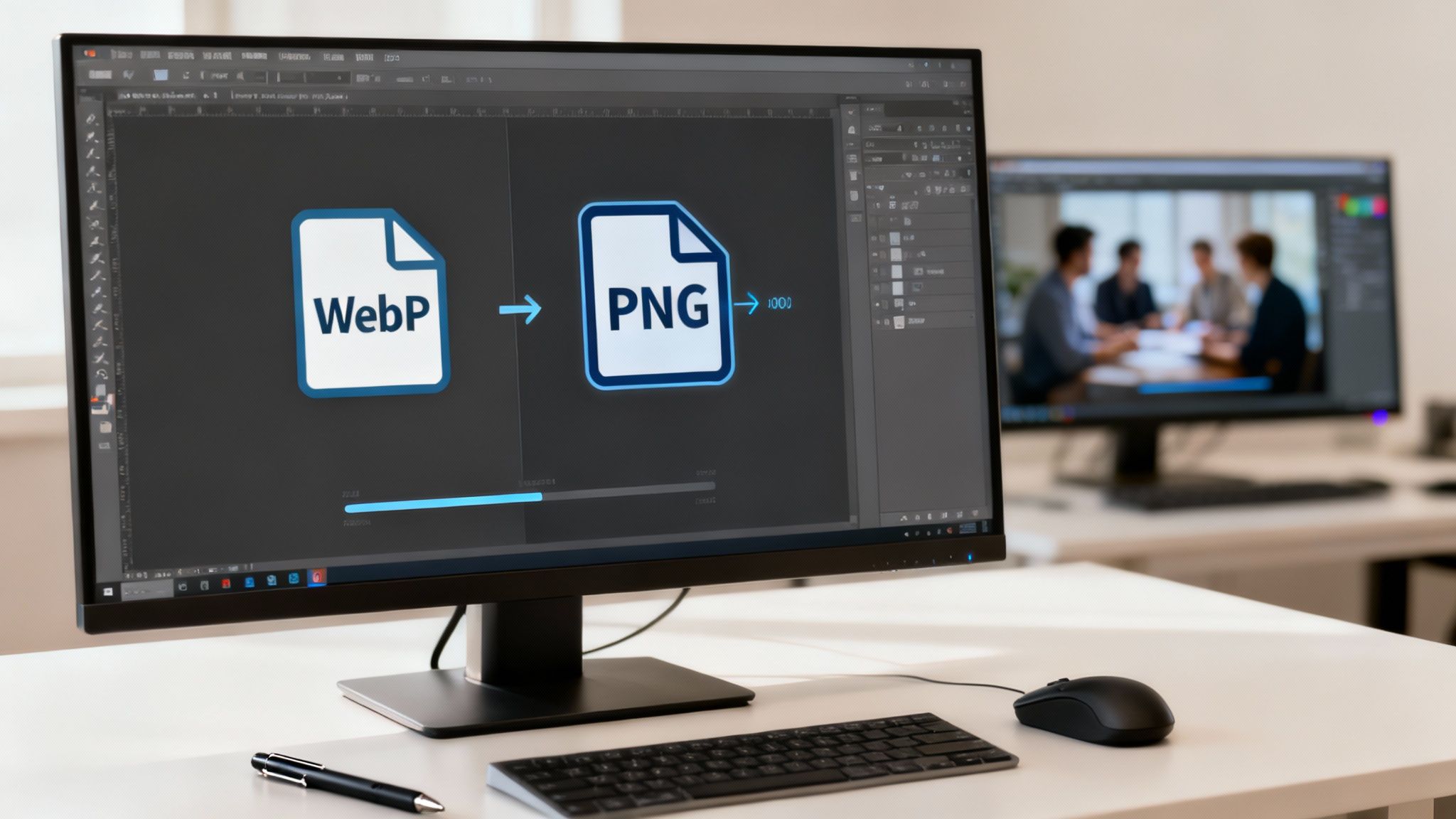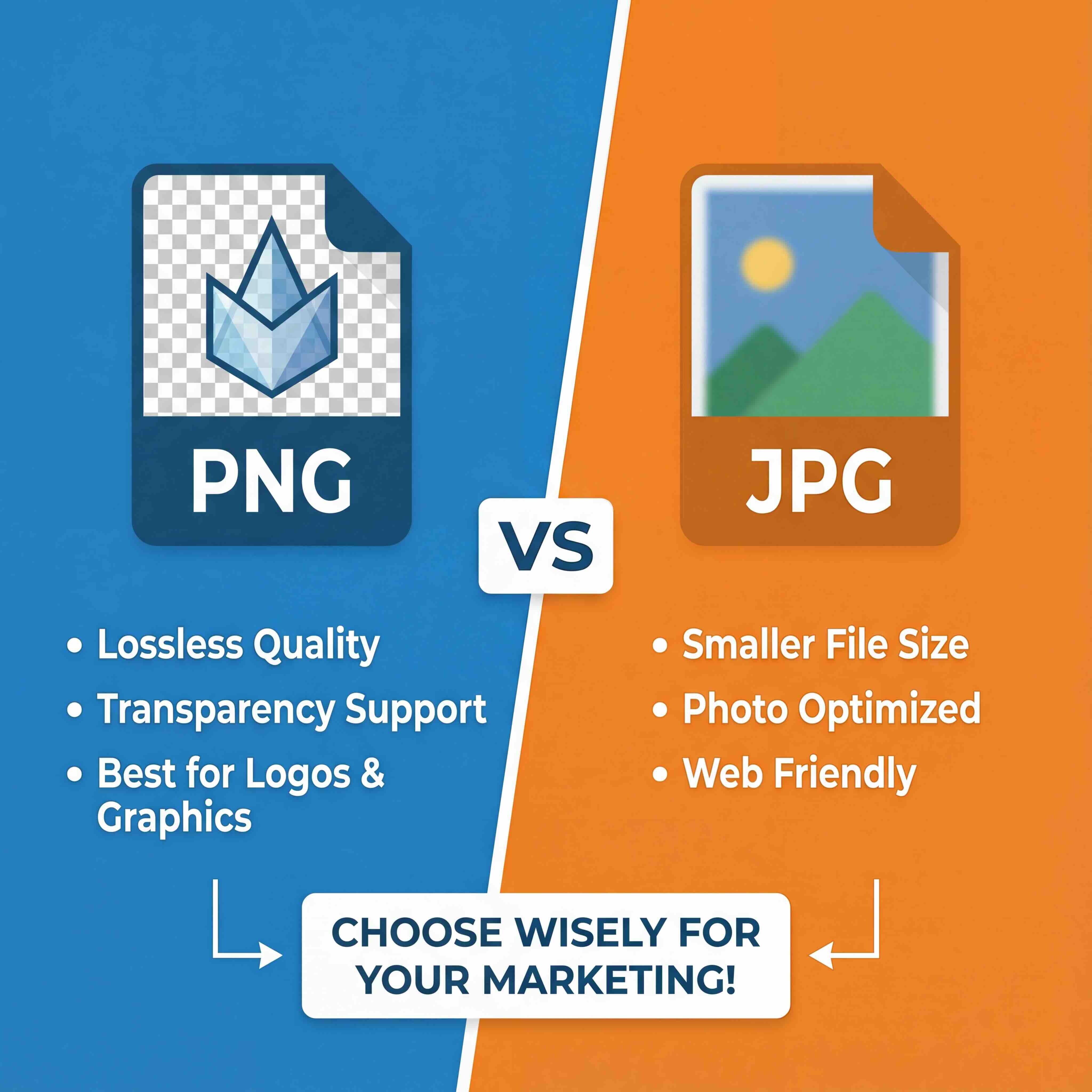AI 3D model generation is the process of automatically creating three-dimensional digital assets from inputs like text or images. This technology is transforming a once time-consuming manual process, making advanced 3D content creation more accessible and efficient for professional teams.
The New Era of Digital Creation
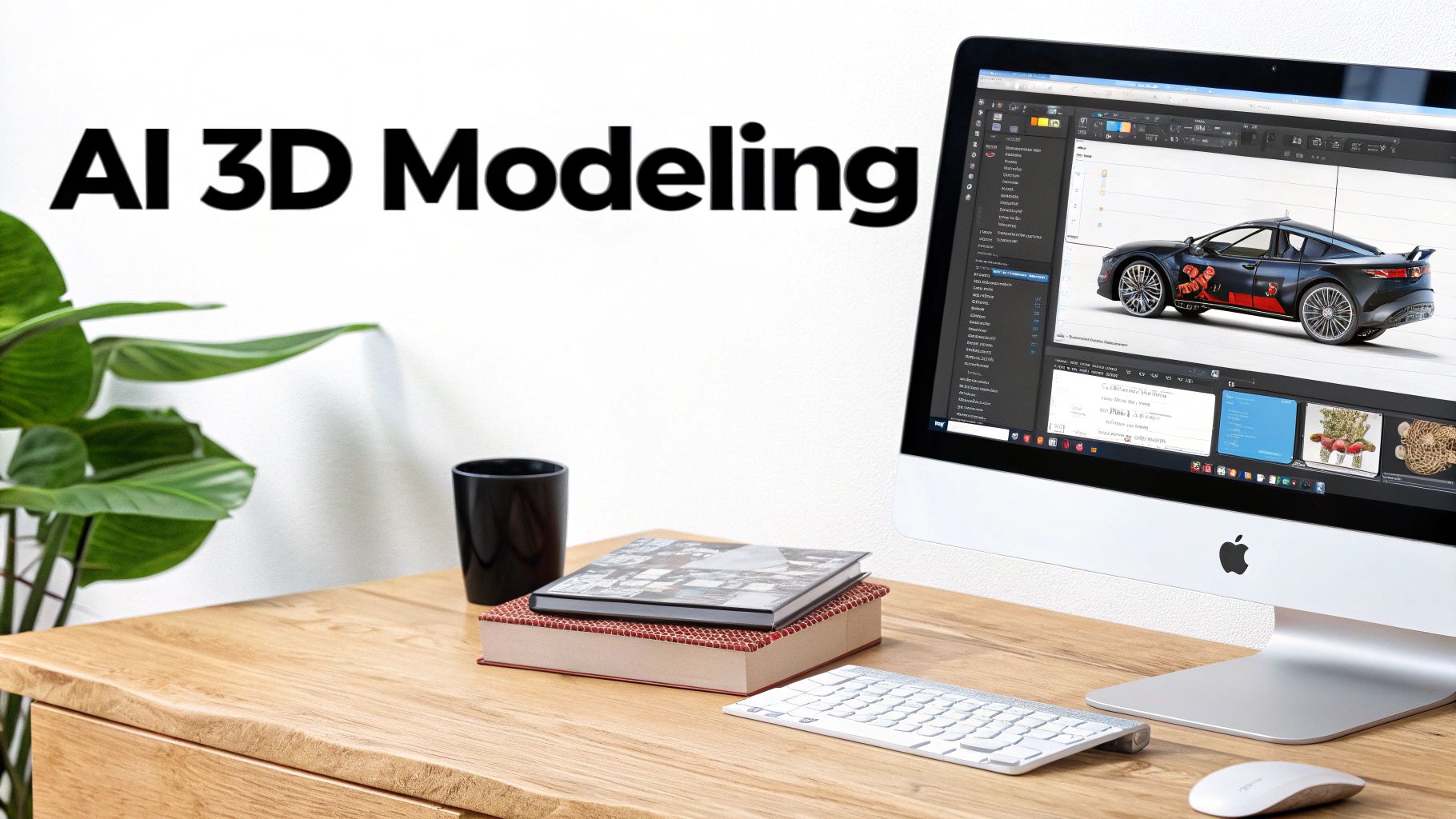
What once seemed like science fiction is now a practical tool for business. AI is fundamentally reshaping how we design and build virtual worlds, moving beyond initial hype to become a reliable component in professional pipelines. This guide provides a business-focused overview of how these systems operate and how they can be integrated responsibly.
We will explore how AI automates the technical aspects of 3D modeling, unlocking new efficiencies for developers, designers, and project managers. The objective is to provide a clear roadmap for adopting this technology safely and effectively.
A Rapidly Expanding Market
The demand for AI-driven 3D creation is growing significantly. The market is estimated to reach approximately USD 2 billion in 2025 and is projected to expand to USD 10 billion by 2028.
This surge is fueled by an increasing need for faster, more cost-effective 3D content in sectors like gaming, architecture, and e-commerce. This growth is not just a statistic; it signifies how quickly AI tools are becoming a standard in the industry. You can find more details on this expansion in reports from marketinsights.report.
AI is not a replacement for human creativity but a powerful collaborator. It handles repetitive technical tasks, freeing up creative professionals to focus on vision, refinement, and innovation.
This article provides a comprehensive overview, from the core technology to a step-by-step workflow and real-world examples. We will also cover best practices for integrating these tools into your work safely and effectively.
Here’s a quick look at what we’ll cover:
- Underlying Technology: A simple breakdown of how AI learns to conceptualize and construct in three dimensions.
- Practical Workflow: A four-stage process to take you from a basic idea to a production-ready asset.
- Industry Use Cases: Concrete examples of how businesses are already leveraging this technology.
- Best Practices: Straightforward guidance for safe, ethical, and effective implementation.
Our focus is to provide the knowledge you need to begin using this technology with confidence and compliance.
How AI Learns to Build 3D Models
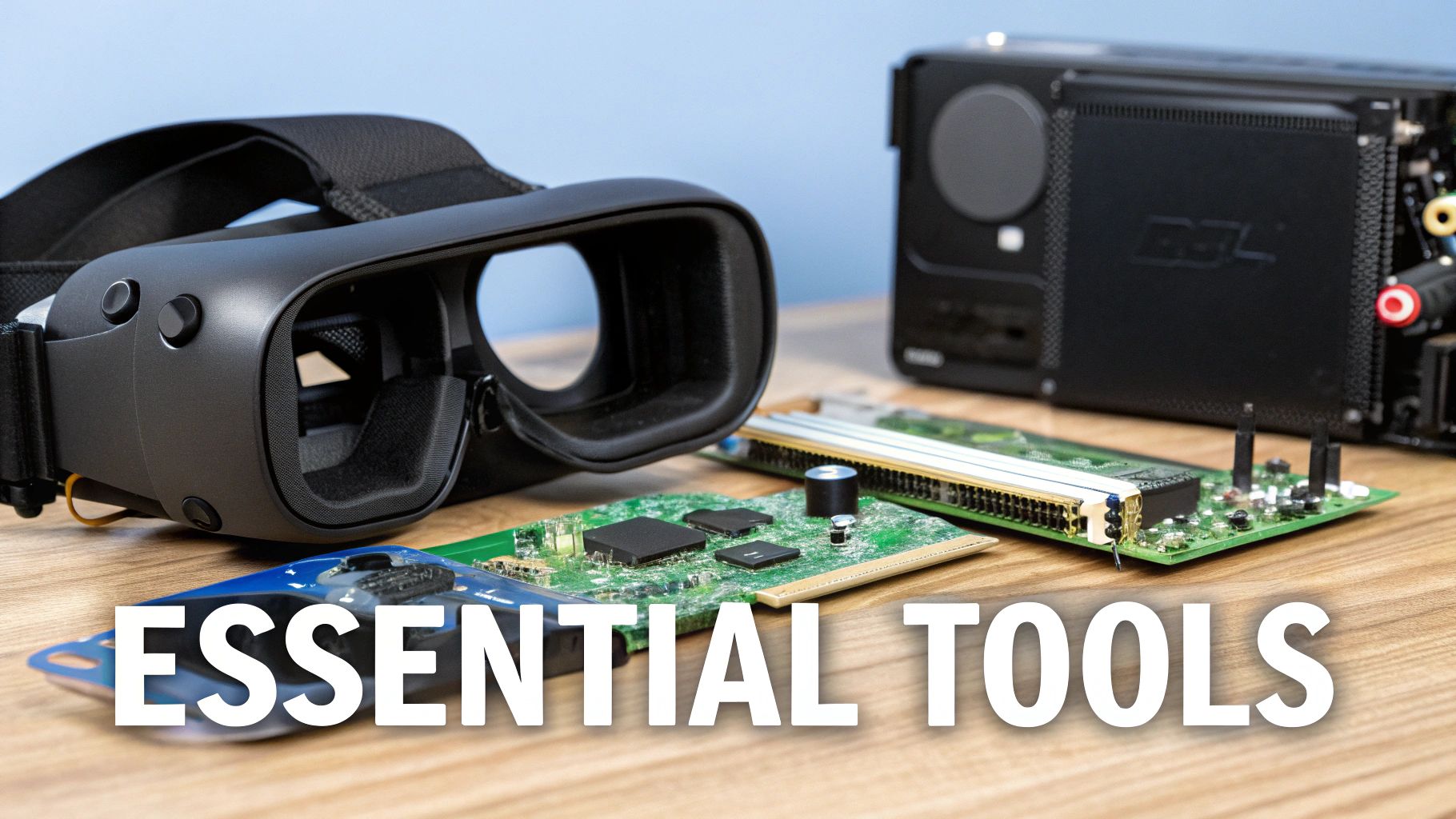
At its core, AI 3D model generation is about learning from data—millions of examples. The AI functions like a digital sculptor that has studied countless existing objects to understand shape, texture, and form.
This is the result of deep learning algorithms trained to identify patterns in large datasets. Just as a human artist studies anatomy to draw a realistic figure, an AI studies digital files—images, 3D scans, and text descriptions—to learn the underlying principles of object construction.
This is how the AI learns to connect the words "vintage leather armchair" with the visual characteristics of aged leather, a specific furniture silhouette, and the glint of brass studs.
From Words and Pictures to 3D Objects
The most common ways we interact with these AI systems are quite intuitive. They generally fall into three main categories, each designed to turn a simple idea into a usable digital asset.
- Text-to-3D: The most direct method. You write a descriptive prompt like, "a weathered oak treasure chest with iron fittings," and the AI begins constructing the model.
- Image-to-3D: Here, you provide the AI with one or more 2D images. It analyzes them from different angles to infer the object's full three-dimensional shape.
- Video-to-3D: This extends the image-based approach, using video footage to capture an object in motion. This gives the AI more data to reconstruct a highly detailed model.
The text-to-3D approach has grown in popularity. The market was valued at approximately USD 2.5 billion in 2024 and is expected to reach USD 15.1 billion by 2033. This significant growth is driven by efficiency—turning a simple sentence into a complex 3D asset is a game-changer for development timelines. You can read the full analysis on AI text-to-3D generator market growth.
The Tech Driving the Innovation
So, what is happening behind the scenes? A few key technologies make this possible. While they are complex, their functions are straightforward. They act as the AI's "brain" and "eyes," allowing it to understand scenes and create new designs.
Two of the major technologies here are Generative Adversarial Networks (GANs) and Neural Radiance Fields (NeRFs).
Think of a GAN as a creative partnership between two AIs. One AI (the "Generator") creates a 3D model, while the second (the "Discriminator") critiques it by comparing it to real-world examples. This continuous feedback loop compels the Generator to improve, producing increasingly realistic results.
NeRFs, on the other hand, are reconstruction specialists. They take a series of 2D images of a scene and learn to render a complete 3D version, capturing everything from lighting and reflections to transparency. It's like providing the AI with a stack of photos and asking it to build a perfect digital diorama.
A Practical Comparison of Methods
Choosing the right generation method depends on your starting inputs and desired outcomes. Each one offers unique benefits for different creative needs, whether you're brainstorming new concepts or creating a precise digital copy of a real-world product.
To make it clearer, here's a simple breakdown of the main approaches.
Comparing AI 3D Generation Methods
Understanding these foundational concepts—how the AI learns and the different ways it can create—is the first step to making AI 3D model generation a core part of your workflow. When you understand what’s happening behind the scenes, you can make more informed decisions about how to prompt, refine, and ultimately use these powerful tools responsibly.
Your Step-by-Step Generation Workflow
Understanding the technology is one thing, but applying it is another. A structured AI 3D model generation workflow is not about simply pushing a button and hoping for the best. It’s a deliberate, step-by-step process designed to yield high-quality, usable assets consistently.
For professional teams, this means establishing a pipeline that ensures consistency and integrates seamlessly with your existing creative tools.
We can break the entire process down into four distinct stages. Each step builds on the last, taking you from an initial concept to a polished, production-ready 3D model. Following this structure helps manage expectations and ensures the final result meets professional standards.
Stage 1: Concept and Prompting
It all begins with a clear idea. Before the AI can execute, it needs precise instructions. This is where prompt engineering is crucial—the skill of writing detailed text descriptions or selecting appropriate source images to communicate your vision to the AI.
A vague prompt like "a sword" will produce a generic result. A professional-grade prompt is specific: "a medieval longsword with a weathered steel blade, ornate gold crossguard, and a leather-wrapped hilt." That level of detail guides the AI toward a high-quality starting point. To master this, it's worthwhile to learn how to write effective AI prompts.
Stage 2: The Generation Phase
Once your prompt is finalized, the AI begins its work. This is the generation phase, where the system processes your input and produces the initial 3D asset. The complex algorithms we discussed start analyzing the data, transforming your words or images into geometry and textures.
The first model generated is rarely the final version. Consider it a strong first draft—a solid foundation to build upon. This stage can take anywhere from a few seconds to several minutes, depending on the tool and the complexity of your request.
This quick chart shows how your input and the AI’s output feed into each other.
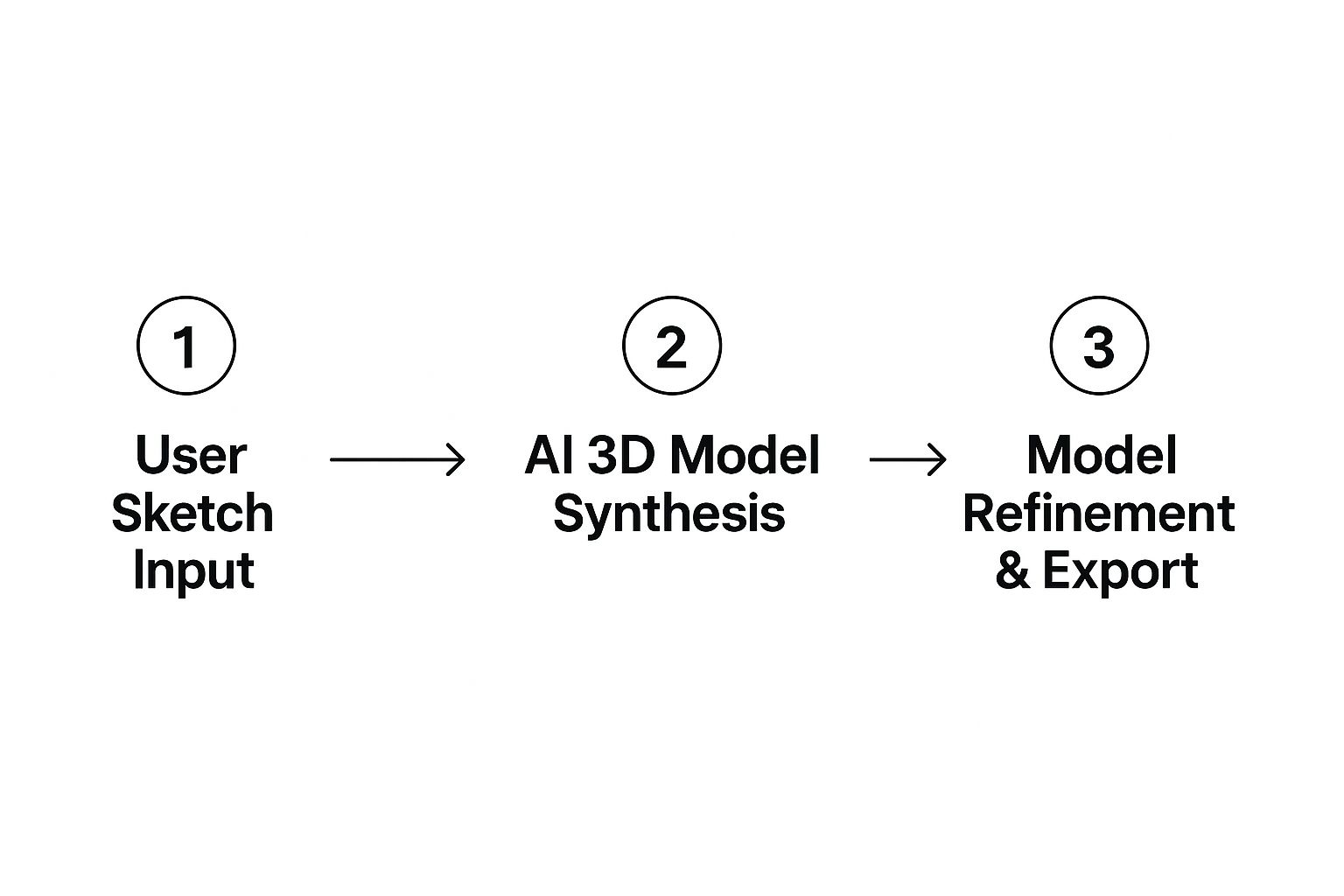
It’s a collaborative loop, not a one-time command. Refinement is essential.
Stage 3: Refinement and Iteration
With the initial model in hand, the real creative work begins. This is the refinement stage, where you provide feedback to the AI to adjust details, correct imperfections, and explore variations. It's akin to being an art director for an algorithm.
You might instruct the AI to lengthen the sword's hilt, change the gold to silver, or add custom engravings. Most modern platforms are designed for this interactive process, allowing you to fine-tune the model without starting from scratch.
This iterative process combines the speed of AI with the discerning eye of a human creator—an essential combination for any serious production pipeline.
Stage 4: Post-Processing and Integration
This is the final and perhaps most critical step: preparing the model for its intended application. An AI-generated asset is almost never "game-ready" or "print-ready" immediately. It typically needs to be exported into standard 3D software for manual refinement.
This usually involves a few key tasks:
- Geometry Cleanup: Correcting any broken polygons or messy geometry to ensure the model is a clean, solid object.
- Retopology: Rebuilding the mesh for a more efficient polygon structure, which is crucial for real-time applications like games or AR.
- UV Unwrapping: Creating a 2D map of the model's surface to apply textures correctly.
- Optimization: Reducing the file size and complexity to ensure it performs smoothly in its target environment.
This is where human expertise becomes indispensable. By following this four-stage workflow, teams can integrate AI 3D model generation into their processes in a structured and predictable way, turning a novel technology into a genuine production asset.
Real-World Industry Applications
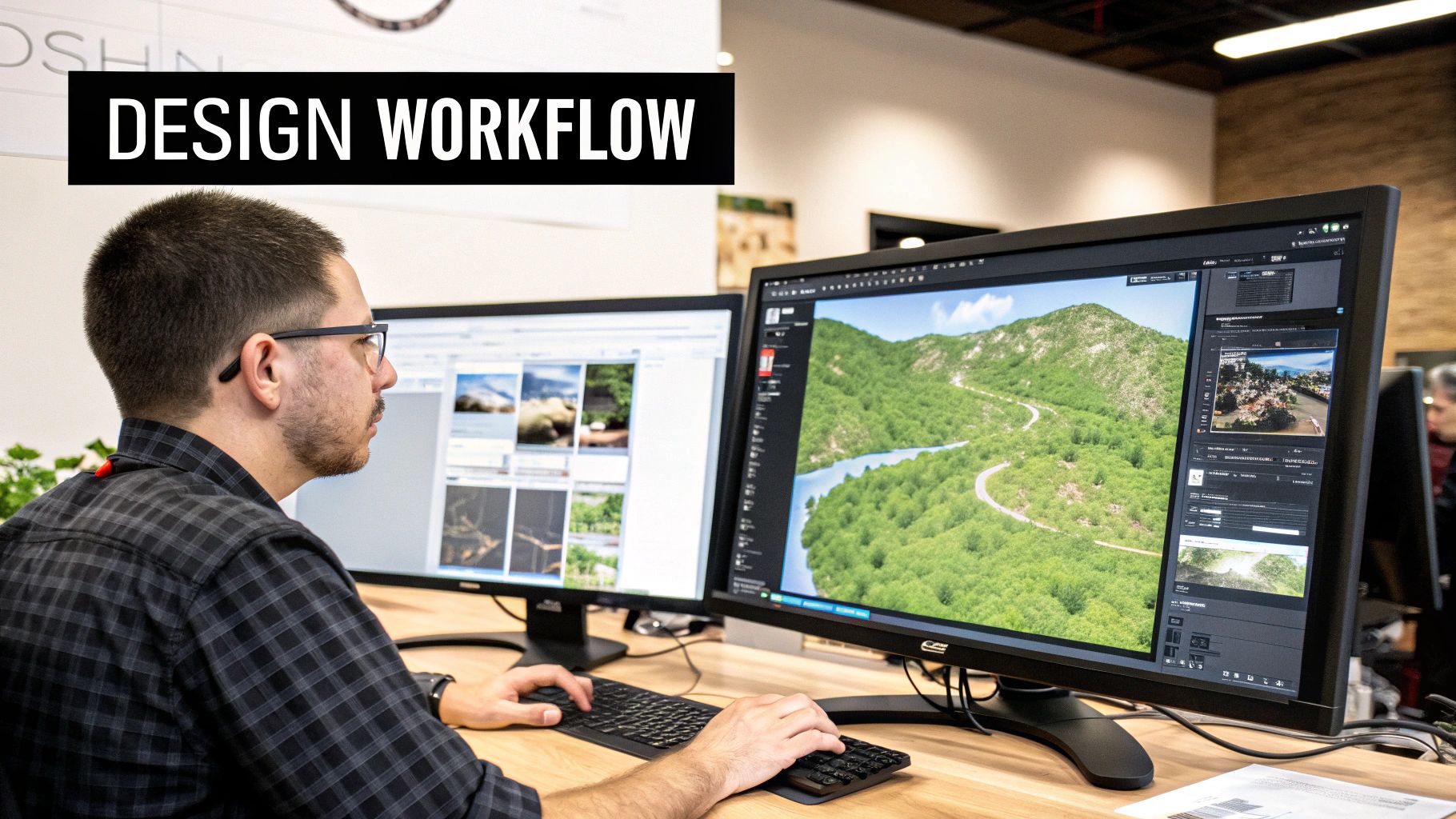
Technology is only as valuable as its real-world impact. For AI 3D model generation, that impact is already significant across major industries. We are moving beyond technology demonstrations and into practical, business-oriented results.
What once required a specialist weeks to model by hand can now be drafted in minutes. This allows creative and technical teams to shift their focus from repetitive tasks to innovation. From building game worlds to designing medical devices, AI is becoming a go-to tool for turning an idea into a tangible 3D asset.
Gaming and Entertainment
The gaming industry has a continuous need for new content under tight deadlines. AI generation is a major asset here. Studios can populate large open worlds with unique assets—trees, rocks, props, character gear—without overextending their art teams.
Instead of an artist manually creating every rock variation, they can generate hundreds from a single concept. This makes environments feel more organic and less repetitive. It also enables smaller independent studios to create large, detailed worlds that were once only feasible for AAA teams with substantial budgets.
AI handles the foundational work of creating background assets, allowing senior artists to dedicate their talent to "hero" props and main characters. The result is higher artistic quality across the board, even with demanding schedules.
This is not limited to static props. AI is excellent for creating base meshes for characters and creatures, giving sculptors a high-quality starting point and reducing early production time.
E-commerce and Retail
In the competitive online retail sector, customer experience is paramount. AI-generated 3D models are making immersive shopping experiences accessible for brands that previously couldn't afford them.
For example, a customer can now use augmented reality (AR) to see how a new sofa looks in their living room. This is only possible if you can create 3D models of your entire product catalog, and AI makes that process faster and more affordable, which can in turn help reduce product returns.
Furthermore, these models are the backbone of virtual try-on applications for fashion and accessories. The ability to generate these assets at scale is unlocking entirely new ways to market and sell products online.
Architecture and Real Estate
For architects and urban planners, the early concept phase has been significantly accelerated. An architect can provide the AI with rough sketches or text descriptions and receive multiple building concepts in minutes.
This allows teams to explore a wider range of design ideas from the outset. These initial AI models are also powerful tools for aligning clients and stakeholders long before detailed blueprints are created.
In real estate, AI-generated models are used to build virtual tours, allowing potential buyers to walk through a property from anywhere in the world. This creates a more engaging experience for buyers and a larger market for sellers. To take these concepts further, our 3D modeling software comparison guide can help you find the right tools for refinement.
Manufacturing and Healthcare
The impact extends beyond creative fields. In manufacturing, engineers are using AI to generate rapid digital prototypes. They can test and iterate on new part designs virtually before investing in expensive physical production.
Meanwhile, in healthcare, AI is creating highly precise, patient-specific anatomical models from CT and MRI scans. Surgeons use these 3D models to plan complex procedures, improving accuracy and contributing to better patient outcomes.
The market for this technology is expanding globally. The Asia Pacific region is expected to lead, with a projected CAGR of about 26.26% from 2025 to 2032, driven by growing gaming industries and government AI initiatives. You can find more data on the growth of the AI-generated 3D asset market on snsinsider.com.
Navigating Challenges and Best Practices
While AI 3D model generation is incredibly efficient, it is not a fully automated solution. For any professional team, the key is to adopt it with a clear understanding of its current limitations. The technology is powerful, but it is not perfect.
Acknowledging its shortcomings is the first step toward building a production pipeline that is reliable, secure, and effective.
AI outputs can be inconsistent. One prompt may yield a near-perfect asset, while the next might produce a model with unusual artifacts or a complete misinterpretation of your concept. This variability necessitates a "human-in-the-loop"—a skilled artist who guides and refines the AI's work, rather than simply accepting its first draft.
Then there is the primary technical challenge: the model's underlying structure, or its topology. AI-generated models almost always have complex, inefficient geometry with an excessive number of polygons. For real-time applications like games or AR, this can be a performance bottleneck, making a manual cleanup and retopology phase essential.
Confronting Technical and Quality Hurdles
To derive real value from these tools, you must plan for these technical issues. The goal is not just to generate something quickly; it is to produce an asset that meets professional quality and performance standards.
Consider AI as a powerful starting point, not the final product.
Here are the most common technical problems you will encounter:
- Inconsistent Model Quality: Results can vary significantly. The best practice is to iterate on prompts, generate multiple options, and select the strongest one as a base.
- Messy Topology: Models often have chaotic, disorganized geometry. It is imperative to budget time for a manual retopology pass in a tool like Blender or Maya to create a clean, production-ready mesh.
- Flawed UV Maps: AI-generated textures and their UV layouts are frequently imperfect. An artist will need to unwrap the model properly to ensure textures apply correctly without distortion or seams.
- Manual Cleanup is a Must: Nearly every AI-generated asset requires some form of manual post-processing. This includes fixing issues like floating vertices or non-manifold geometry before the model is usable.
Learning to write better prompts from the start can save significant cleanup time later. Exploring advanced AI prompting strategies is an excellent way to get cleaner initial results from the AI.
Addressing Ethical and Legal Considerations
Beyond technical aspects, using AI 3D model generation responsibly means addressing legal and ethical questions proactively. For any serious enterprise, protecting intellectual property and ensuring compliance are not optional.
One of the primary concerns is the origin of the AI's training data. Using models trained on ethically sourced, properly licensed datasets is critical to avoid potential copyright infringement. It is essential to vet the data practices of any platform you use.
The legal landscape for AI-generated assets is still evolving. For businesses, the safest approach is to work with AI platforms that provide clear terms of service, full commercial rights, and indemnification for the content you create.
Navigating this requires a proactive strategy. Here’s a simple framework for ensuring your use of AI is both safe and compliant:
- Vet Your Tools: Choose AI platforms that are transparent about their training data and offer clear, enterprise-friendly licenses that protect your IP.
- Establish Clear Ownership Policies: Create internal guidelines defining ownership of AI-generated assets and how they can be used commercially. This prevents legal ambiguity.
- Prioritize Ethically Sourced Data: Whenever possible, use services committed to training their models on ethically sourced and licensed data. This minimizes risk and supports a healthier AI ecosystem.
- Keep Humans Involved: Maintain significant human oversight in the creative process. When an artist substantially modifies an AI-generated asset, it strengthens your copyright claim over the final work.
The Future of Automated 3D Creation
The field of AI 3D model generation is advancing at an incredible pace. We are rapidly moving beyond simple, static objects toward a future where AI understands not just appearance, but also function and interaction. This evolution is making 3D content creation accessible to a broader range of professionals and businesses.
We are seeing new trends that point to a far more powerful and intuitive way of creating. Soon, AI systems will have a much deeper understanding of physics, enabling them to build models that are not only visually convincing but also functionally sound and ready for simulation. Imagine generating a gear mechanism that is already rigged and operational, or a building structure with realistic load-bearing properties.
The Next Wave of 3D Innovation
The next frontier is real-time generation and tight integration with immersive platforms. This means creating and modifying 3D environments on the fly, directly within VR and AR applications.
- Real-Time Generation: Future tools will allow creators to generate assets directly within a VR or AR space, instantly building a scene from a simple voice command.
- Physics-Aware AI: Models will come with a built-in understanding of physical properties like weight, material strength, and aerodynamics—a game-changer for engineering and realistic simulations.
- Seamless Platform Integration: Expect deeper connections between AI generators and existing tools, like game engines and CAD software. This will reduce much of the friction in today's workflows.
These advancements will open up remarkable new business opportunities, from highly personalized AR shopping to dynamic training simulations that adapt to user actions in real time. For a closer look at these shifts, our article on how generative AI is changing the future of 3D design dives deeper into this evolution.
AI as a Creative Partner, Not a Replacement
It is important to view these developments through the correct lens. AI is not here to replace human creativity—it is here to augment it. Think of it as a powerful collaborator that handles repetitive, technical tasks, allowing designers, artists, and engineers to focus on strategy, creative direction, and final polish.
The most effective path forward is a partnership. By combining the speed and scale of AI with the nuanced judgment and creative vision of human professionals, teams can achieve results that were previously unattainable.
This collaborative model is quickly becoming the standard in modern production. To get a broader perspective on how AI is shaping industries, check out this keynote summary on human and AI collaboration in the future of work. The message is clear: the future belongs to those who learn to work with intelligent systems, not against them.
For businesses and creators, the time to begin exploring these tools is now. The key to staying ahead is building a strategy around safe, compliant, and responsible use. By embracing AI 3D model generation today, you are positioning your team to lead in an increasingly digital and automated world.
Common Questions About AI 3D Model Generation
Integrating AI 3D model generation into professional workflows raises some practical questions. Here are the answers to the most common inquiries.
How Fast Is It, Really?
The time required to generate a model varies. A simple object from a text prompt can be created in just a few minutes, which is excellent for rapid ideation.
However, a more detailed model, or one generated from a set of images, might take closer to an hour. The primary advantage is the significant time savings compared to traditional modeling—what once took a skilled artist days of work can now be drafted in a fraction of the time.
What Skills Do I Need to Make This Work?
While you don't need to be a veteran 3D artist to start, certain skills significantly improve the final quality. The most important is prompt engineering—the ability to write clear, descriptive text to guide the AI is essential for achieving desired results.
A good understanding of 3D fundamentals like form, lighting, and composition is also highly beneficial. It helps you evaluate the AI's output and identify areas for improvement. For any serious project, that artistic oversight is crucial.
You will also likely need some proficiency in standard 3D software. The AI rarely produces a perfect, production-ready model on the first attempt, so the human touch is needed for refinement.
Are the Models Ready to Use Out of the Box?
Almost never. The AI's output should be considered an excellent first draft, not the final product. It almost always requires post-processing to meet professional standards. This "human-in-the-loop" workflow is a best practice for any serious production.
This cleanup stage typically involves a few steps:
- Geometry Cleanup: Importing the model into a tool like Blender or Maya to fix any vertex or face issues in the mesh.
- Topology Optimization: Rebuilding the model's polygon flow for efficiency, whether for a game engine or a 3D printer.
- Texture Refinement: Ensuring textures and UV maps are clean, correctly applied, and visually appealing.
This refinement process is what transforms an AI concept into a production-ready digital asset.
Who Owns the Copyright to These Models?
This is a critical question. The legal framework for AI-generated content is still developing, and regulations can vary by jurisdiction and tool. Ownership is almost always defined in the platform's terms of service.
Some tools grant you full commercial rights to your creations, while others may have restrictions. For any business, it is absolutely critical to carefully review the licensing agreements of any AI 3D model generation service you use. This is the only way to protect your work, your business, and your intellectual property.
Ready to bring AI into your team's 3D creation process? Virtuall offers a secure, collaborative platform built for professionals. Turn your ideas into high-quality models in seconds and manage your entire creative pipeline, all in one place. Discover how Virtuall can accelerate your projects today.

